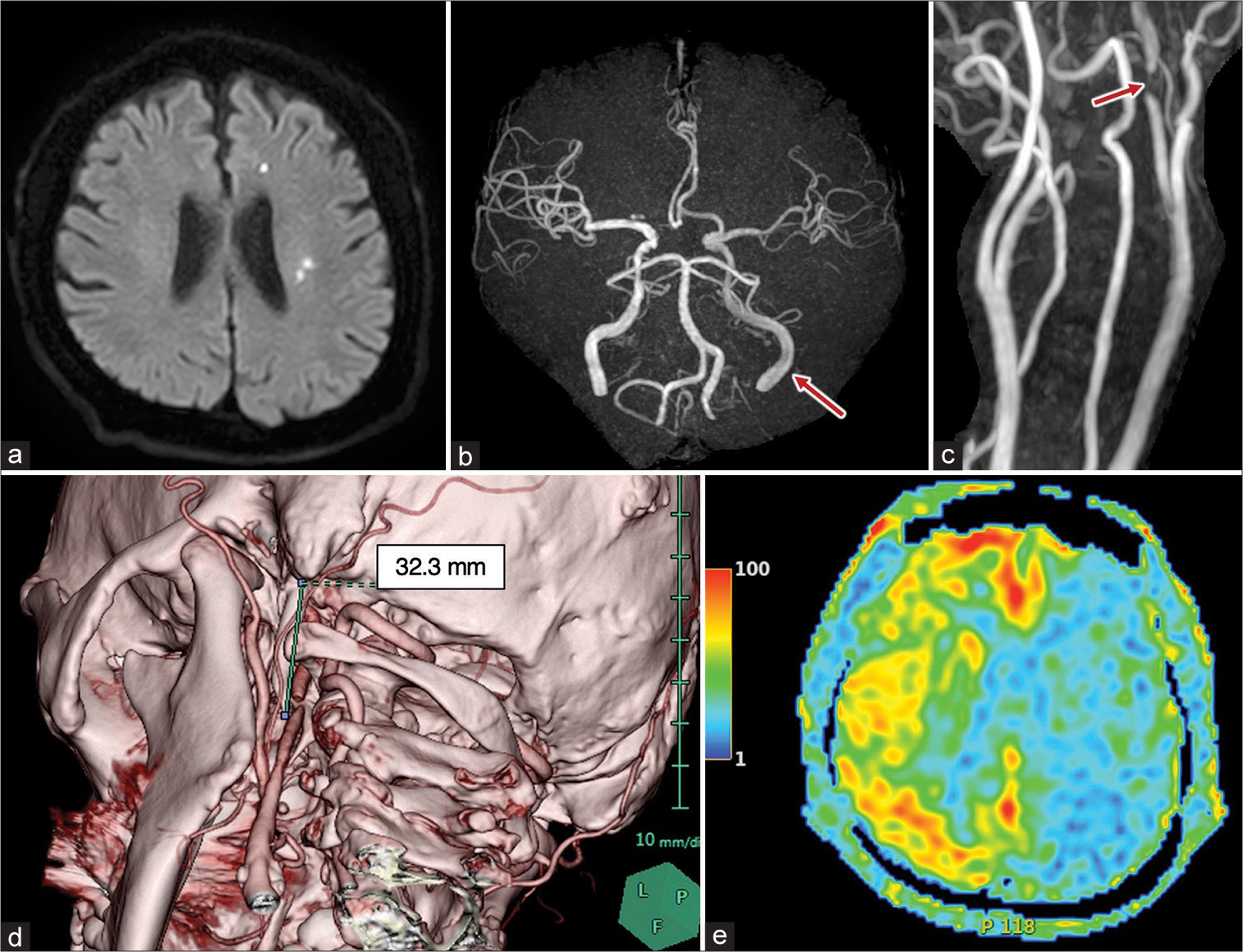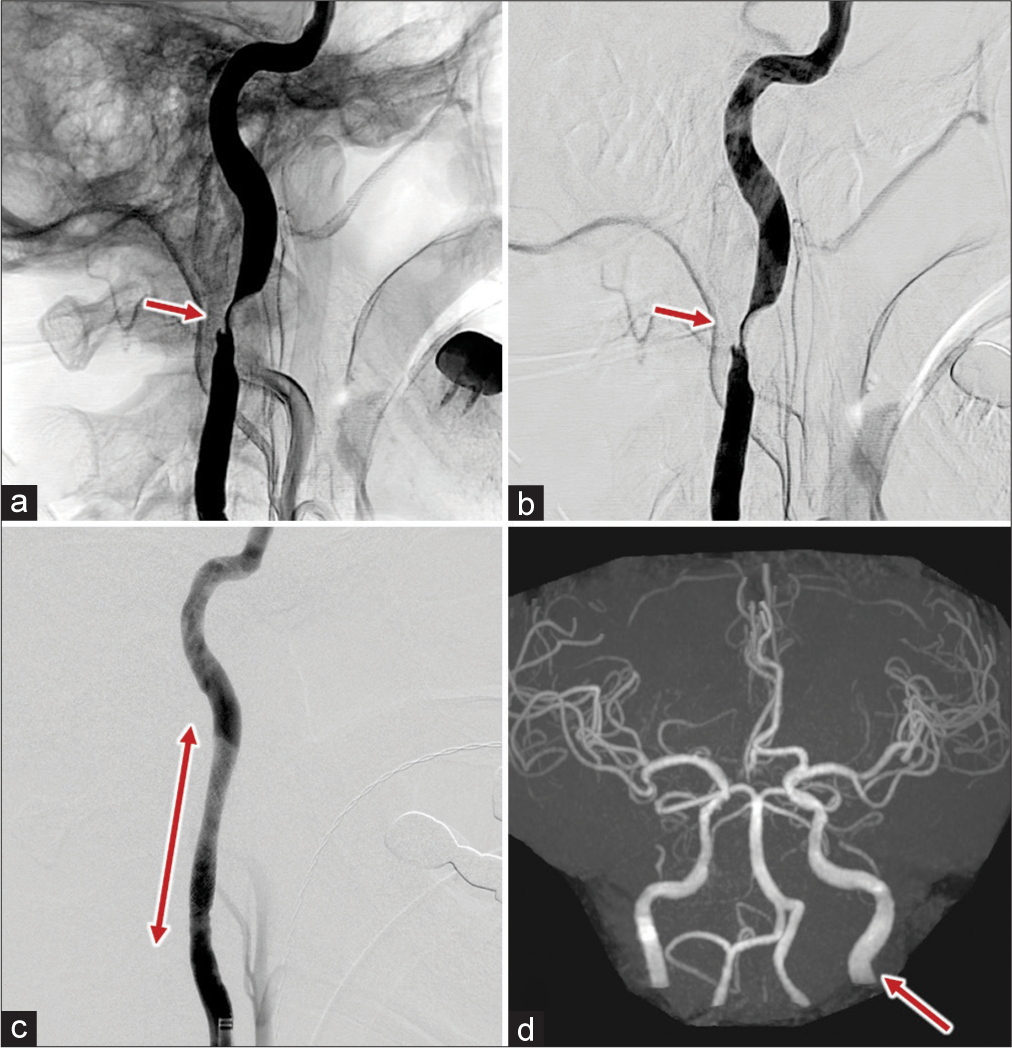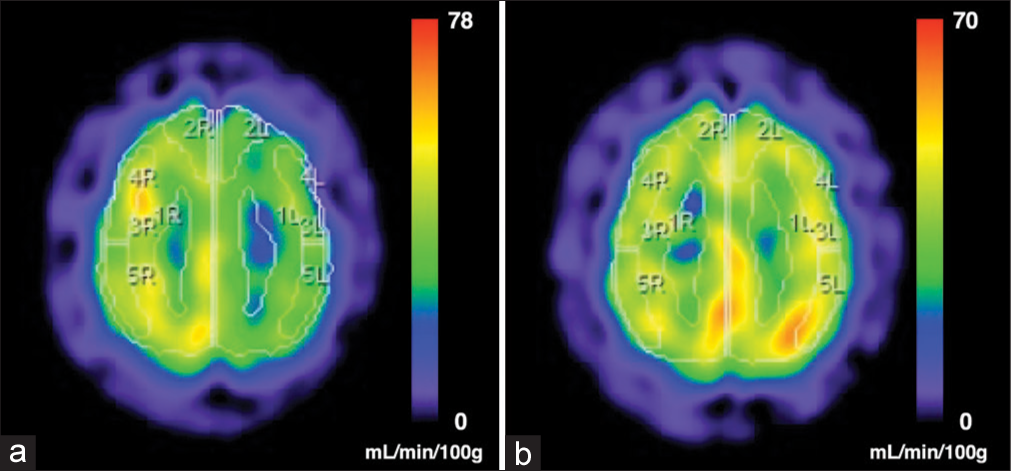- Department of Neurosurgery, Asahikawa Medical University, Asahikawa, Hokkaido, Japan.
Correspondence Address:
Nobuyuki Mitsui, Department of Neurosurgery, Asahikawa Medical University, Asahikawa, Hokkaido, Japan.
DOI:10.25259/SNI_47_2022
Copyright: © 2022 Surgical Neurology International This is an open-access article distributed under the terms of the Creative Commons Attribution-Non Commercial-Share Alike 4.0 License, which allows others to remix, transform, and build upon the work non-commercially, as long as the author is credited and the new creations are licensed under the identical terms.How to cite this article: Yasuaki Okada, Nobuyuki Mitsui, Hirokazu Ozaki, Takahiro Sanada, Shota Yamamoto, Masato Saito, Manabu Kinoshita. Carotid artery dissection due to elongated styloid process treated by acute phase carotid artery stenting: A case report. 29-Apr-2022;13:183
How to cite this URL: Yasuaki Okada, Nobuyuki Mitsui, Hirokazu Ozaki, Takahiro Sanada, Shota Yamamoto, Masato Saito, Manabu Kinoshita. Carotid artery dissection due to elongated styloid process treated by acute phase carotid artery stenting: A case report. 29-Apr-2022;13:183. Available from: https://surgicalneurologyint.com/surgicalint-articles/11561/
Abstract
Background: Eagle’s syndrome is famous for one of the causes of internal carotid artery dissection. The treatment strategy for the illness, however, is not well established. Here, we report a case of internal carotid dissection due to an elongated styloid process successfully treated by carotid artery stenting (CAS).
Case Description: A 72-year-old male with temporary dysarthria and consciousness disorder was diagnosed to suffer from multiple cerebral infarctions due to Eagle’s syndrome. A cerebral blood flow (CBF) study revealed decreased blood flow and a CAS was performed 15 days after admission to preserve antegrade blood flow, resulting in full recovery of the affected CBF.
Conclusion: We reported a case of vascular Eagle’s syndrome in which the patient showed fluctuated neurological deficits successfully treated by CAS. Our experience suggests that cases of vascular Eagle’s syndrome due to hemodynamic stress can be treated by CAS.
Keywords: Carotid artery stenting, Carotid dissection, Eagle’s syndrome
INTRODUCTION
An elongated styloid process is one of the causes of ICA dissection[
CASE PRESENTATION
A 72-year-old male was transferred to our institution presenting temporary dysarthria and consciousness disorder. Diffusion-weighted image (DWI) revealed several small infarctions [
Figure 1:
Radiological images at initial symptom onset are presented. DWI showed multiple hyperintense lesions at the left hemisphere (a) and intracranial blood flow was impaired at the lesion side on magnetic resonance angiography (b: Red arrow). The blood flow signal was absent at the high cervical portion of the ICA (c: Red arrow). 3D-CTA revealed an enlarged styloid process, whose length was 32.3 mm (d), and a cerebral blood flow study by arterial spin labeling showed a remarkable CBF decrease at the affected side (e).
Figure 2:
DSA at initial symptom onset (a) and 5 days later (b) are shown. The red arrows indicate the location of stenosis. Carotid artery stenting (CAS) was performed and a reasonable vascular reconstruction was achieved (c). The red arrowheads indicate the whole length of the placed stent. Magnetic resonance angiography after CAS showed recovered cerebral blood flow (d: red arrow).
As the patient’s neurological symptoms recovered during the initial assessment, medical treatment was chosen, and the patient was treated conservatively by aspirin (100 mg/body/day). Oral administration of clopidogrel (loading 150 mg/day, maintenance 75 mg/day) and intravenous infusion of argatroban were added later on, as the patient suffered from repeatedly appearing transient neurological deficits with no change in DWI. Systolic blood pressure was also maintained above 160 mmHg to counteract the cerebral hemodynamic stress. CAS was performed 15 days after admission. The procedure was performed under general anesthesia, and an eight French temporally occlusion balloon catheter (OPTIMO, Tokai Medical Products, Japan) was delivered proximal to the stenotic lesion. A micro-guidewire was passed through the lesion right after balloon inflation. The blood from the distal ICA was flowed out through to the femoral vein. After percutaneous transluminal angioplasty (PTA) for stenosis, A 6 to 8 mm tapered Carotid WALLSTENT (Boston Scientific, Boston, USA) was placed at the stenotic lesion after PTA [
DISCUSSION
The elongated styloid process is defined as that longer than 25– 30 mm[
In our presented cases, the patient presented repeated transient neurological symptoms due to low CBF of the affected side with no change in DWI. This clinical course caused us some confusion to choose or not to choose surgical interventions. Some case reports describe worsening of neurological symptoms by trigger movements such as head flexion, tilt, and extension,[
Styloid process resection (styloidectomy) was sometimes carried out to prevent its ICA compression and we found five such cases.[
CONCLUSION
We experienced a symptomatic vascular Eagle’s syndrome with unstable neurological symptoms due to hemodynamic stress. Intervention by vascular reconstruction could be considered not only for cases suffering distal cerebral artery embolization caused by the syndrome but also for cases presenting fluctuation of neurological symptoms due to hemodynamic stress. The elongated styloid process could sometimes compress and damage the placed stent for treatment; thus, styloidectomy should be considered for most symptomatic vascular Eagle’s syndrome cases.
Declaration of patient consent
Patient’s consent not required as patient’s identity is not disclosed or compromised.
Financial support and sponsorship
Nil.
Conflicts of interest
There are no conflicts of interest.
References
1. Duarte-Celada WR, Jin D, Neves G, Windisch T. Bilateral carotid dissection due to Eagle syndrome in a young female. eNeurologicalsci. 2021. 24: 100353
2. Eagle WW. Elongated styloid process: Further observations and a new syndrome. Archiv Otolaryngol. 1948. 47: 630-40
3. Faivre A, Abdelfettah Z, Rodriguez S, Nicoli F. Neurological picture. Bilateral internal carotid artery dissection due to elongated styloid processes and shaking dancing. J Neurology Neurosurg Psychiatry. 2009. 80: 1154-5
4. Hooker JD, Joyner DA, Farley EP, Khan M. Carotid stent fracture from stylocarotid syndrome. J Radiol Case Rep. 2016. 10: 1-8
5. Horio Y, Fukuda K, Miki K, Hirao N, Iwaasa M, Abe H. Dynamic assessment of internal carotid artery and elongated styloid process in a case of bilateral carotid artery dissection. Surg Neurol Int. 2020. 11: 163
6. Ogura T, Mineharu Y, Todo K, Kohara N, Sakai N. Carotid artery dissection caused by an elongated styloid process: Three case reports and review of the literature. Nmc Case Rep J. 2015. 2: 21-5
7. Ohara N, Sakaguchi M, Okazaki S, Nagano K, Kitagawa K. Internal carotid artery dissection caused by an elongated styloid process: Usefulness of transoral ultrasonography. J Stroke Cerebrovasc Dis. 2012. 21: 918.e7.8
8. Razak A, Short JL, Hussain SI. Carotid artery dissection due to elongated styloid process: A self-stabbing phenomenon. J Neuroimaging. 2014. 24: 298-301
9. Soo OY, Chan YL, Wong KS. Carotid artery dissection after prolonged head tilting while holding a newborn baby to sleep. Neurology. 2004. 62: 1647-8
10. Sveinsson O, Kostulas N, Herrman L. Internal carotid dissection caused by an elongated styloid process (Eagle syndrome). BMJ Case Rep. 2013. 2013: bcr2013009878
11. Torikoshi S, Yamao Y, Ogino E, Taki W, Sunohara T, Nishimura M. A staged therapy for internal carotid artery dissection caused by vascular eagle syndrome. World Neurosurg. 2019. 129: 133-9
12. Yamamoto S, Todo K, Kawamoto M, Kohara N. Carotid artery dissection associated with an elongated styloid process. Intern Med. 2013. 52: 1005-6
13. Yano T, Sasaki I, Kiyohara K, Kawanishi M. Carotid stent fracture due to eagle syndrome after endovascular stenting for the treatment of acute ischemic stroke caused by internal carotid artery dissection: Case report. J Neuroendovascular Ther. 2019. 13: 454-61
14. Zuber M, Mender J, Mas J. Carotid artery dissection due to elongated styloid process. Neurology. 1999. 53: 1886-7








